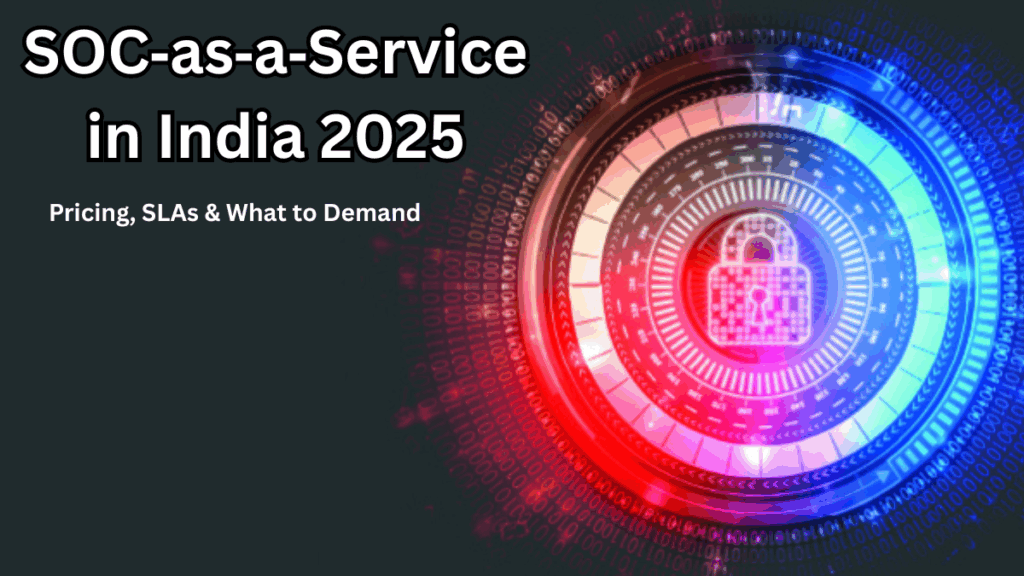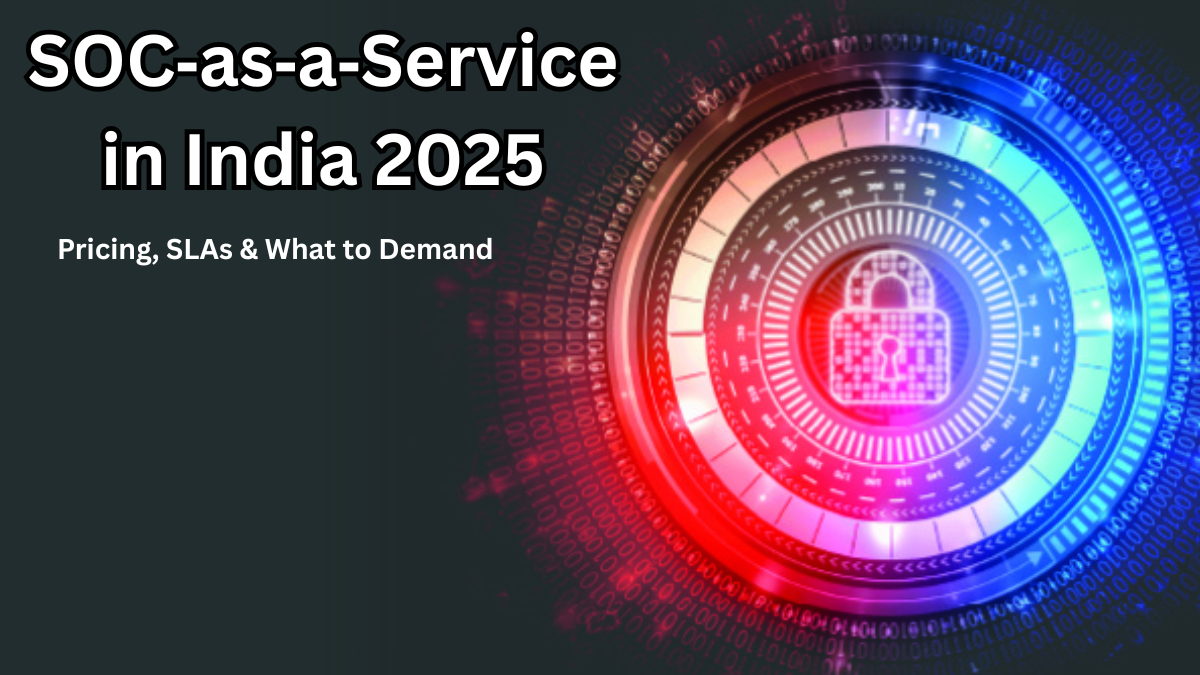In today’s threat-heavy digital landscape, cybersecurity is no longer optional — it’s a lifeline for businesses. This is why SOC‑as‑a‑Service in India 2025 is gaining ground as an affordable, scalable, and highly effective way to manage security operations. But before you jump in, it’s crucial to understand the Pricing & SLAs, along with what exactly you should expect from your provider.

Why SOC‑as‑a‑Service Matters in 2025
Traditional security operations centers (SOCs) are complex and expensive to build and maintain. For small and mid-sized enterprises, they often remain out of reach.
SOC‑as‑a‑Service changes that by providing:
-
24/7 threat monitoring without the heavy in-house investment
-
Access to advanced tools like SIEM (Security Information & Event Management) and AI-driven analytics
-
Expert cybersecurity teams that act as your remote defense arm
With the rise in ransomware attacks and compliance requirements, Indian businesses in 2025 are increasingly considering this model to keep their data safe.
Understanding SOC‑as‑a‑Service Pricing in India
The pricing models for SOC‑as‑a‑Service in India 2025 vary depending on the scale of your operations, the number of devices/endpoints, and the complexity of services you need.
Approximate Costing by Company Size
| Company Size | Approximate Monthly Cost (₹) | Services Included |
|---|---|---|
| Small Businesses | ₹50,000 – ₹1,00,000 | Basic monitoring, incident alerts, log management |
| Medium Enterprises | ₹1,00,000 – ₹3,50,000 | Advanced threat detection, incident response, compliance reporting |
| Large Enterprises | ₹3,50,000+ | 24/7 monitoring, full threat intelligence, advanced analytics, custom SLAs |
Pro Tip: Always ask for transparent pricing and insist on a detailed service breakdown. Hidden costs can quickly add up.
SLAs – What Should You Demand?
An SLA (Service Level Agreement) defines what you’re entitled to. When signing up for SOC‑as‑a‑Service in India 2025, you must ensure the SLA is clear and comprehensive.
Key Elements to Demand:
-
Response Times: How quickly will they respond to a detected threat? (Aim for minutes, not hours.)
-
Resolution Timelines: When will an incident be fully resolved?
-
Uptime Guarantees: A reliable SOC must ensure 99.9% uptime.
-
Compliance Support: Are they covering regulations like GDPR, PCI-DSS, or local data protection laws?
What to Ask Your SOC‑as‑a‑Service Provider
Before signing a contract, make sure you ask these critical questions:
-
Do you provide 24/7 monitoring and real-time alerts?
-
Is there a dedicated incident response team for my business?
-
How often do you provide threat intelligence reports?
-
Can the solution scale as my business grows?
Final Thoughts
SOC‑as‑a‑Service in India 2025 offers an excellent opportunity for businesses to strengthen cybersecurity without draining budgets. But the key lies in understanding the Pricing & SLAs and making sure the provider aligns with your business goals.
If you’re evaluating providers, don’t hesitate to negotiate SLAs and insist on clarity in pricing — this could make all the difference between basic protection and a truly robust cybersecurity defense.
FAQs
Q1. What is SOC‑as‑a‑Service, and why do I need it?
SOC‑as‑a‑Service is an outsourced security operations center. It offers continuous threat monitoring, incident response, and compliance support — essential for businesses looking to protect their digital assets.
Q2. How much does SOC‑as‑a‑Service cost in India?
Costs typically range from ₹50,000 to ₹3,50,000 per month, depending on your company size and the depth of services.
Q3. What should be included in an SLA for SOC‑as‑a‑Service?
An SLA should clearly state response times, resolution timelines, uptime guarantees, and compliance support to ensure you get what you’re paying for.
Q4. Can small businesses benefit from SOC‑as‑a‑Service?
Absolutely. In fact, small businesses benefit the most as they gain enterprise-grade cybersecurity at a fraction of the cost of building an in-house SOC.
Click here to learn more
